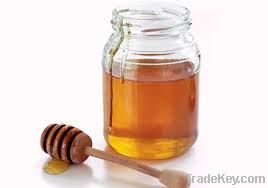


FOB Price
Get Latest Price10 ~ 15 USD / Box
|1 Box Minimum Order
Country:
Bangladesh
Model No:
-
FOB Price:
10 ~ 15 USD / Box Get Latest Price
Place of Origin:
-
Price for Minimum Order:
10 per Box
Minimum Order Quantity:
1 Box
Packaging Detail:
12 kg
Delivery Time:
3-7 days
Supplying Ability:
1000 Box per Week
Payment Type:
Other, Money Gram, Western Union
Product Group :
-
Bangladesh
Contact Person Mr. Md Hasanul
Bangladesh, Khulna, Other
Why do Bees Make Honey ?
Honeybees collect nectar and store it as honey in their hives. Nectar and honey provide the energy for the bees’ flight muscles and for heating the hive during the winter period. Honeybees also collect pollen which supplies protein for bee brood to grow.
The Colony
Honey bees live in colonies that are often maintained, fed, and transported by beekeepers. Centuries of selective breeding by humans has created honey bees that produce far more honey than the colony needs. Beekeepers harvest the honey. Beekeepers provide a place for the colony to live and to store honey in. The modern beehive is made up of a series of square or rectangular boxes without tops or bottoms placed one on top of another. Inside the boxes frames are hung in parallel, in which bees build up the wax honeycomb in which they both raise brood and store honey. Modern hives enable beekeepers to transport bees, moving from field to field as the crop needs pollinating and allowing the beekeeper to charge for the pollination services they provide.
A colony generally contains one breeding female, or “queen”; a few thousand males, or “drones”; and a large population of sterile female “worker” bees. The population of a healthy hive in mid-summer can average between *0,**0 and *0,**0 bees. The workers cooperate to find food and use a pattern of “dancing” to communicate with each other.
Queen
The queen is the largest bee in the colony. Queens are developed
from larvae selected by worker bees to become sexually mature.
The queen develops more fully than sexually immature workers
because she is given royal jelly, a secretion from glands on the
heads of young workers, for an extended time. She develops in a
specially-constructed queen cell, which is larger than the cells
of normal brood comb, and is oriented vertically instead of
horizontally.
She will emerge from her cell to mate in flight with approximately ****8 drone (male) bees. During this mating, she receives several million sperm cells, which last her entire life span (from two to five years). In each hive or colony, there is only one adult, mated queen, who is the mother of the worker bees of the hive, although there are exceptions on occasion.
Although the name might imply it, a queen has no control over the hive. Her sole function is to serve as the reproducer; she is an “egg laying machine.” A good queen of quality stock, well reared with good nutrition and well mated, can lay up to 3,**0 eggs per day during the spring build-up and live for two or more years. She lays her own weight in eggs every couple of hours and is continuously surrounded by young worker attendants, who meet her every need, such as feeding and cleaning.
Drones
The male bees, called “drones”, are characterized by eyes that
are twice the size of those of worker bees and queens, and a body
size greater than that of worker bees, though usually smaller
than the queen bee. Their abdomen is stouter than the abdomen of
workers or queen. Although heavy bodied, drones have to be able
to fly fast enough to catch up with the queen in flight. Drones
are stingless.
Their main function in the hive is to be ready to fertilize a
receptive queen. Mating occurs in flight, which accounts for the
need of the drones for better vision, which is provided by their
big eyes. In areas with severe winters, all drones are then
driven out of the hive. The life expectancy of a drone is about
*0 days.
Worker Bees
A worker bee is a non-reproducing female which performs certain
tasks in support of a bee hive. Worker bees undergo a well
defined progression of capabilities. In the summer *8% of the
bees in a hive are worker bees. In the winter, besides the queen,
all bees are worker bees. Workers feed the queen and larvae,
guard the hive entrance and help to keep the hive cool by fanning
their wings. Worker bees also collect nectar to make honey. In
addition, honey bees produce wax comb.
Honey Bee Products
Of course, honey is the main honey bee product that we are interested in here at the National Honey Board! In addition, there are a few other products of the hive that are also extremely important.
Honey: In the hive the bees use their honey stomachs to ingest and process the nectar a number of times. It is then stored in the honeycomb. Nectar is high in both water content
| Country: | Bangladesh |
| Model No: | - |
| FOB Price: | 10 ~ 15 / Box Get Latest Price |
| Place of Origin: | - |
| Price for Minimum Order: | 10 per Box |
| Minimum Order Quantity: | 1 Box |
| Packaging Detail: | 12 kg |
| Delivery Time: | 3-7 days |
| Supplying Ability: | 1000 Box per Week |
| Payment Type: | Other, Money Gram, Western Union |
| Product Group : | - |